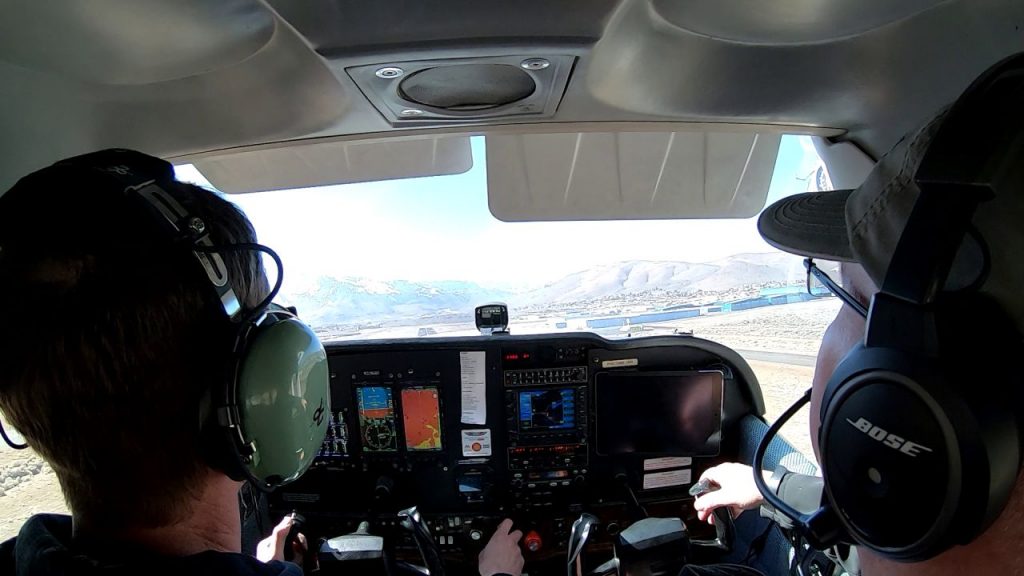The common ATC directive for an airplane at a towered airport to “line up and wait” is regularly used to facilitate efficient traffic flow, but at a non-towered airport this should not to be performed because, you know, safety. There also several other procedures the FAA wants to make clear.
In addition to Part 91.126, FAA Advisory Circular 90-66 was created to focus on non-towered airport flight operations and covers best practices for communications, flow and supplement information found in the AIM, paragraph 4-3-3, Traffic Patterns, and the Chapter 14 in the PHAK.
The AC is not a long read, but the primary take-aways from it are:
- The FAA does not regulate traffic pattern entry, only traffic pattern flow. Traffic pattern entry information is advisory, provided by using this AC or by referring to the AIM and the PHAK .
- Left Traffic unless indicated otherwise by visual markings, light gun signals, airport publications, or a published approach procedure.
- See And Avoid and keep lights and strobes on. Radios are not required, so there may be older NARDO airplanes working the pattern.
- Straight-In Landings are okay if coordinated with existing traffic and not creating a safety issue.
- Pilots conducting instrument approaches (typically straight-in) need to be alert and DO NOT have priority over other VFR traffic and should be ready to communicate on CTAF, discontinue the approach, and enter a traffic pattern as needed, based on the traffic saturation to maintain aircraft separation and aviation safety.
- Don’t argue on the radio. If you disagree with what another pilot is doing, operate your aircraft safely and wait until you are on the ground to have that discussion. You may block transmissions from other aircraft that may be departing or landing.
- Turning Crosswind once beyond the departure end of the runway and within 300 feet below traffic pattern altitude. Pilots should make the turn to downwind leg at the traffic pattern altitude. I take issue with this guidance and outline my reasons below.

The turning crosswind advisory within 300′ of TPA (usually 700′ AGL) can be difficult at many airports, especially in the mountains where climb rates can be anemic and/or there is rising terrain off the departure end of the runway. The more common approach practiced is to wait until no less than 400′ of altitude has been gained before turning crosswind. This comes from TERPS which applies to instrument departures and how obstacle clearance is calculated. In addition, based on consistent data from the AOPA Air Safety Institute Accident Reports (formerly the Joseph T. Nall Reports), while more accidents occur on landing, more deaths occur on takeoff and allowing 400′ provides some altitude in case of a loss of control issue and allows for additional traffic to depart safely without having a very lengthy departure leg.
As for the whole ‘line up and wait’ controversy, it is addressed in a different advisory circular, FAA AC 91-73 Taxi Operations. Not really the place where one would expect to find such information, but it is outlined in Appendix 1, paragraph 5, for non-towered airports where it says, “Pilots should not line up on the departure runway and hold any longer than absolutely necessary.”
It was a long walk, but we finally got there.
The primary reason for not lining up and waiting at a non-towered airport is because there is no one watching your back if you do so. The runway is a dangerous place to be and sitting on the runway waiting for takeoff with no view of the final approach is just an unnecessary risk easily avoided by just waiting another 30 or 60 seconds.
For a couple useful videos regarding un-towered airports, these may be beneficial:
The only issue I have with the video above is that he uses the generic term “Cessna” in his radio calls. This is not as helpful as it could be if he were to be model specific and say “Skyhawk” or “Skylane” or “Caravan” or “Citation” since Cessna makes multiple types of airplanes with multiple performance profiles. Saying “Skyhawk N123AB” on the radio gives everyone an idea of how fast you are likely to be departing, approaching or navigating in the pattern. I have more info on radio etiquette here.
Many times a pilot can adjust their plans if they know they might be inadvertently cutting off a faster airplane when they could extend a downwind, teardrop into the downwind or perform a 360° turn to provide spacing.
In addition, when contacting TRACON or ARTCC and using the generic term “Cessna” or “Piper” the next response from ATC will almost always be “State type of aircraft”. Saying “Skyhawk” immediately informs them that the airplane is a C172, just as Skylanes are all C182s, etc.
